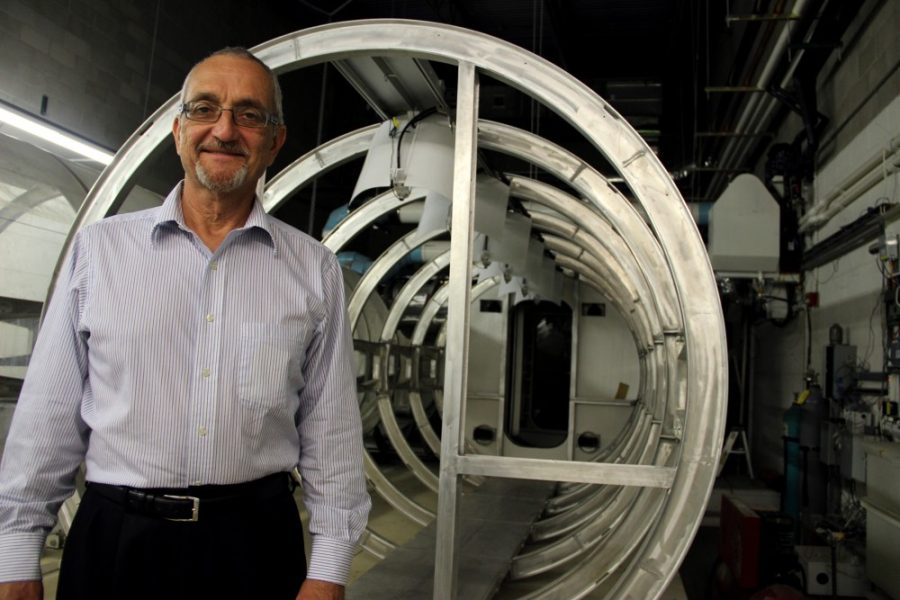The metal feet of a spacecraft touch down on the rust-colored soil of Mars. It is not the first machine that humans beings from Earth have sent to the red planet, but this time it’s different.
Instead of a robotic rover unfolding neatly from the craft, out steps a living, breathing astronaut — the first person to ever set foot on Mars.
There are a number of UA-led projects that are paving the way toward a human colony on Mars, which raises the question: What would it take to live on Mars? Food, water and oxygen are just some of the basic essentials.
Funded by NASA, the Lunar Greenhouse was developed at the UA’s Controlled Environment Agriculture Center. The collapsible 18-foot-long cylinder, though designed to grow vegetables on the moon, could easily be converted for use on Mars, said Gene Giacomelli, director of the UA-CEAC and principal investigator for the project.
Along with providing food, the plants would also produce “freshwater to drink and use, as well as oxygen to breath from the CO2 that the astronaut puts into the air,” Giacomelli said.
After five years of testing, Giacomelli said that each unit could produce all of the water and oxygen needs plus half of the food calorie needs for one astronaut on a daily basis.
However, the Lunar Greenhouse project has been on hold since its two-year grant expired in August 2013. Giacomelli and his team are currently waiting to hear from NASA about whether the project will be selected for the next phase of research, he said.
In addition to food, water and oxygen, prospective space colonists will need protection from the solar radiation that seeps through Mars’ thin atmosphere.
The greenhouse, as well as the astronauts’ living quarters, would have to be buried under a layer of soil for protection from the harmful radiation, said Alfred McEwen, principal investigator for the High Resolution Imaging Science Experiment at the UA. HiRISE utilizes an orbiter to capture high resolution images of the planet’s surface.
Other options for avoiding radiation include building the habitat into a subterranean “lava tube” or making a heavily protected structure on the surface, McEwen said.
McEwen added that, no matter where humans first settle on Mars, it will be a groundbreaking event in the history of scientific advance.
“If you want to really understand something, you need to go there,” he said. “The rovers are great, but they take years to learn what a human being in the field could learn in a day.”
Shaunna Morrison is a graduate student in the department of geosciences who works on the Curiosity mission, which operates a rover on Mars. Like McEwen, she sees revolutionary potential in colonizing the red planet.
Using advanced techniques, the colonists could analyze the Martian soil for the presence of water, organic compounds and even living organisms in the form of microbes, Morrison said.
Aside from answering questions about life in the universe, Giacomelli said that a manned mission to Mars would fuel an explosion in technology, as did the Apollo missions more than 50 years ago.
“It’s not just about people walking on Mars,” Giacomelli said. “It’s the things that would have been developed to make that happen, which will obviously improve science and should improve our quality of life here on Earth.”
Morrison said that she is compelled by the concept of colonizing Mars for a more idealistic reason.
“Going to Mars [would show] that we are capable of anything,” she said. “I think that does a lot for us as a society and as a species.”









